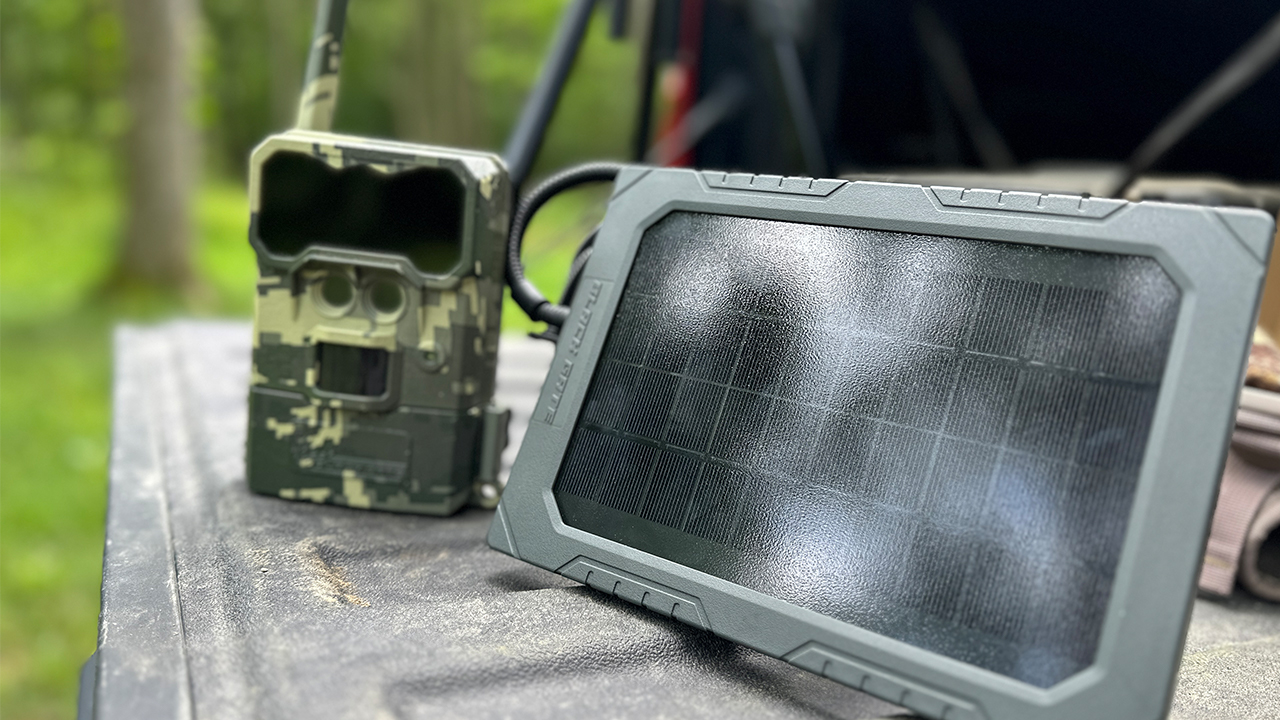Are Solar Panels Worth it For Cellular Trail Cameras?

Trail cameras have been exploding in the hunting realm. Trail cameras as a tool to see what is happening in the woods while you are gone has been a blessing and a curse at the same time.
Trail Cameras are a great tool to have at your disposal. Whether it is for science or just to monitor your property, trail cameras have helped. They are small (most of the time) and operate by electronically capturing movement using a camera. After images or videos are captured, they are then transmitted to your phone using the same technology that sending an image to a friend in a text message works. This requires a constant battery draw and means that there will come a time when you must return to replace batteries or a battery pack.
As hunters, we know the more we enter the woods, the more we disturb wildlife. It is not uncommon for white-tailed deer to leave an area for a couple of days or indefinitely after the presence of a human is detected. Most of the time, this means that any activity, including entering the woods to change batteries can disrupt the movement of deer. Of course, there are cases where the impact is very limited. I have a buddy that can drive his side-by-side into the woods and we joke that he is the ice cream truck because it is like it calls the deer in. This is a very rare case so limiting activity in the woods is a must.
Solar Panels to the Rescue?
In most cases, running a solar panel on a cellular trail camera will keep you out of the woods trying to change out batteries every month or so. There are different kinds of solar panels to keep in mind. Some are just a solar panel charging the device or an external battery. I would say 99.5% of the time, a solar panel is worth it but that is my opinion. Let’s break down the cost of batteries and the cost of the Black Gate Hunting Solar Panel.
The Black Gate Hunting Solar Panel is currently $120 and comes with a mounting bracket, solar panel, and cable. The panel has an internal lithium-ion battery pack that recharges from the panel. As long as there is no darkness for a month straight, you will not have to even think about entering the woods again to change batteries.
If we had to change the internal batteries, we could expect to go through at least 36 batteries in a hunting season (per camera) and even more, if you run the camera outside of the season. Depending on the type of batteries, you will pay around $20-$50 a camera per season. Double if not triple that if you run your cameras year-round. On the low end, you will be cheaper than a $119 solar panel and well over if you use high-end batteries. So if it is cheaper to run batteries, why purchase a solar panel?
No Impact Is Important
If you ask any researcher or serious hunter, having as little impact on wildlife when you are trying to monitor it is ideal. So for years’ worth of batteries for one camera, you could have a solar panel that allows you to only visit the camera if there is an issue or you are taking it down. The upfront cost compared to the benefit is a no-brainer for anyone serious about hunting or research.
My conclusion is that if you can swing the upfront costs of a solar panel (with an internal battery), you will spend the same if not less money and you will not have to bother with the trail camera until you are ready to take it down.

Any ideas on protecting the solar panel? Some furry SOB bent the steel bracket on mine and put a small nick in the panel screen. Fortunately the panel still works. I’m thinking of using a suet feeder cage and a cable lock. (I already have an “amusing” collection of photos of failed attempts to gnaw and claw my steel camera boxes.)
Hi Charlie. We likely wont have a protective case made for the panels because the most valuable piece is the front glass and that couldn’t ever be covered due to it being the power source/charging source. Bears seem to be curious animals no matter how high you put cameras in trees. We do have some Canada users that make customer spikes around their cameras and panels to detour them a little bit but as far as a solar panel bear box, it would be very difficult to product something that would protect the panel other then the back and sides of it. Im very sorry!
Do I still need to have fresh batteries to start using the solar panel or can your camera use only panel set and forget
We recommend that you use Batteries as well when using our solar panel. This is just as a backup but you can use the solar panel only as well.
so would you just use standard batteries or need rechargeable?
Essentially the solar panel is pre-charged before taking it to the field. After it’s in the field the sun will sustain the charge. The internal batteries are a backup in case the solar panel fails or loses power so your camera will always have a backup power supply. The camera can run without AA batteries and just the solar panel only but we always like a backup in case something happens, so we always recommend keeping AA batteries in the camera as well.
You don’t want to use rechargeable in the camera. The internal battery and solar panel are two separate power sources so having regular batteries in the camera is what you want. The solar panel will not charge the internal batteries so we highly recommend staying away from rechargeable.